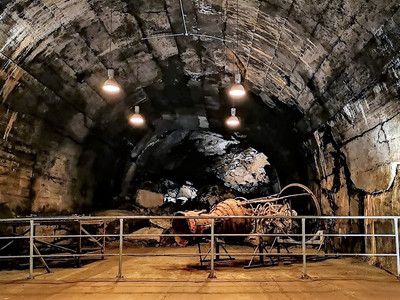Circular route around the spring "Salzaspring", Kohnstein, Hörningen and the Mittelbau-Dora concentration camp memorial.
The first destination of the hike is the natural monument Salzaspring, one of the three major karst springs of the South Harz. The water takes nine months to travel underground from the sinking points of the South Harz rivers Steina, Uffe, Wieda and Zorge to the Salza spring. On the Karst hiking trail, the route leads west along the Hirschenteich pond over the Kohnstein massif to the Sattelköpfe at the northern edge of Hörningen. The Sattelköpfe form the southern slope of the leaching valley of the Wieda with their stratigraphic step, which flows above ground or underground in the valley depending on the water conditions. To the north, the gypsum rock lies exposed and forms a richly structured karst landscape with sinkholes and uvalas. The landscape consists of a mix of forest, bushes, poor and dry grasslands, and individual dolomite and gypsum rocks with cliff flora vegetation. Botanically, the Sattelköpfe are among the most valuable areas of the South Harz karst landscape and are under nature conservation.
The path goes down into the Wiedatal as part of the Karst hiking trail. There is a short connecting path to Woffleben station here. Our route goes east, past the foot of a gypsum quarry and further southeast on the Kaiserweg through the Kohnstein forest over the grounds of the Mittelbau-Dora concentration camp memorial back to "Salzaspring". A visit to the concentration camp memorial with a guided tour through the tunnels is recommended, where from 1943 thousands of concentration camp prisoners were used for forced labor under inhumane conditions in the construction of rockets and lost their lives.

